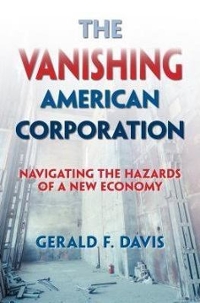Question
1. (04.01 LC) The benefit of ________ is interest, while the benefit of ________ is a portion of a company's profit. (2 points) a bond;
1.
(04.01 LC) The benefit of ________ is interest, while the benefit of ________ is a portion of a company's profit. (2 points)
| a bond; stock or equity | |
| cash; a bond | |
| cash; a demand deposit | |
| stock; a bond | |
| business investment; a bond |
2.
(04.01 MC) How does an increase in interest rates affect the opportunity cost of holding money and the repayment to creditors? (2 points)
| |||||
| |||||
| |||||
| |||||
|
3.
(04.02 MC) A bank is currently giving out loans at an interest rate of 17% for an expected inflation rate of 3%. What is the current real interest rate in the economy? (2 points)
| 20% | |
| 14% | |
| 5% | |
| 17% | |
| 3% |
4.
(04.02 LC) Which of the following is true for the real rate of interest? (2 points)
| The real rate of interest is the product of the nominal rate and expected inflation. | |
| The real rate of interest can be negative. | |
| The real rate of interest is the interest charged by banks on loans. | |
| The real rate of interest does not adjust for inflation. | |
| The real rate of interest is equal to the nominal interest. |
5.
(04.03 MC) If a household consumer withdraws $5,000 from their savings account, initially, M1 will ________ and M2 will ________. (2 points)
| decrease; decrease | |
| decrease; increase | |
| increase; be constant | |
| increase; decrease | |
| increase; increase |
6.
(04.03 MC) The function of money as a store of value is explained by which of the following statements? (2 points)
| Money can be stored as an asset because it has an intrinsic value. | |
| Money can be saved and used in the future because of its purchasing power. | |
| Money has a store of value because it offers protection against high rates of inflation. | |
| Money allows comparison of the value of different commodities. | |
| Money is used by individuals to acquire other goods and services. |
7.
(04.04 MC) Assume that a bank has a total deposit of $55,000 and the reserve ratio is 20%. What are the amounts of money that the bank will keep for itself and it will give out as loans? (2 points)
| The bank's fractional reserve is equal to $11,000, and the excess reserve is equal to $44,000. | |
| The bank's fractional reserve is equal to $11,000, and the excess reserve is equal to $55,000. | |
| The bank's fractional reserve is equal to $44,000, and the excess reserve is equal to $11,000. | |
| The bank's fractional reserve is equal to $55,000, and the excess reserve is equal to $66,000. | |
| The bank's fractional reserve is equal to $55,000, and the excess reserve is equal to $44,000. |
8.
(04.04 MC) Use the data table to answer the question that follows.
| Assets | Liabilities |
|---|---|
| Actual Reserves $6,000 | Demand deposits $40,000 |
| Loans $34,000 |
Assume the reserve requirement is 10%. Based on this small bank's data, what is the maximum amount in new loans that it could give? (2 points)
| $2,000 | |
| $4,000 | |
| $10,000 | |
| $20,000 | |
| $34,000 |
9.
(04.05 MC) Assuming no other change, there is a decrease in the nominal interest rate. How will the money supply in the economy change as a result of this change in the nominal interest rate? (2 points)
| There will be an increase in the money supply. | |
| There will be a decrease in the money supply. | |
| There will be an increase initially, but it will decrease afterwards. | |
| There will be a decrease initially, but it will increase afterwards. | |
| There will be no change in the money supply. |
10.



Step by Step Solution
There are 3 Steps involved in it
Step: 1

Get Instant Access to Expert-Tailored Solutions
See step-by-step solutions with expert insights and AI powered tools for academic success
Step: 2

Step: 3

Ace Your Homework with AI
Get the answers you need in no time with our AI-driven, step-by-step assistance
Get Started


